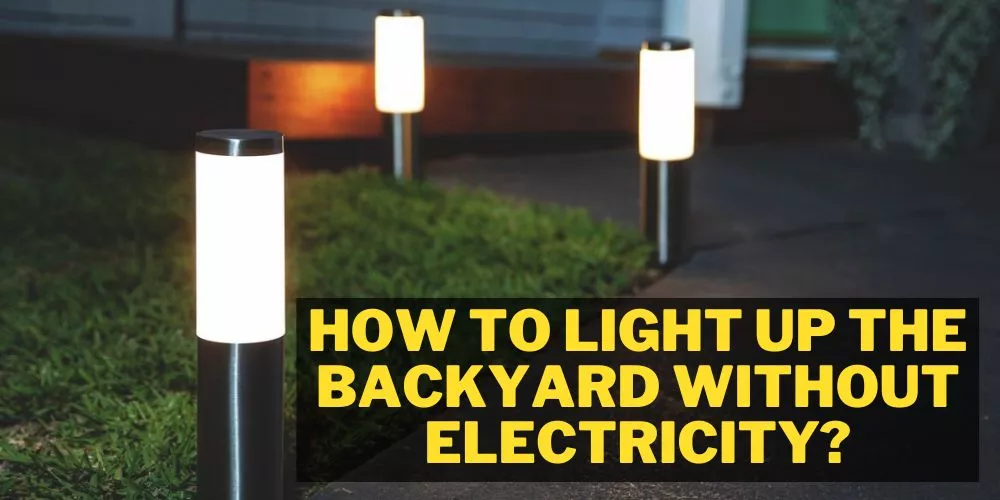An outdoor deck extends your outdoor space and benefits you in several ways. It helps you enhance the aesthetic appeal of your home, increasing your home value. You can also perform several recreational activities with your family.
However, the space below the deck needs to be checked. If left empty, it can start gathering dirt and dust. Weeds may grow into that area. Worst by worst, it may be taken as a home by rodents and pests.
This article helps you understand how to cover underneath the deck, what materials you can use, and suitable options depending on the situation and budget.
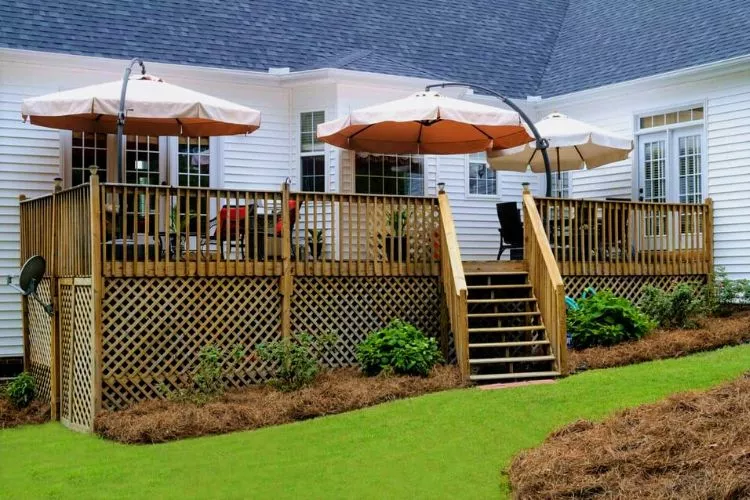
How to cover underneath the deck?
The best option is to install a gravel bed underneath the deck. Gravel restricts moisture underneath the deck, keeps away weeds, and helps with drainage. Materials such as crushed stone, river rock, or pea gravel are good options to cover the underneath of your deck.
Alternatively, you can use concrete, dirt, glass mulch/mulch, pavers, rubber mulch, or sand in place of gravel. Covering the underneath deck will help you to control weeds and erosion, helps with drainage, and enhance the aesthetics and usability.
Materials for Covering the Underneath a Deck
Let’s discuss what materials are for covering underneath a deck.
Crushed stone
Crushed stones of size 3/4″ are preferred gravel as large sizes are difficult to spread and won’t benefit much. On the other hand, smaller-sized gravel won’t be firm and will wash away easily.
You can opt for natural crushed limestone. You can also opt for stones in different colors, but they will cost more. These colored ones won’t drain appropriately. Go for them only if you want to beautify the space.
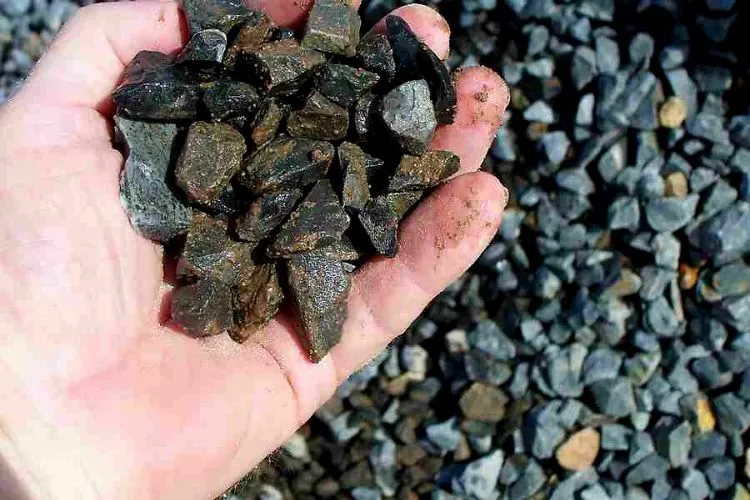
River rock
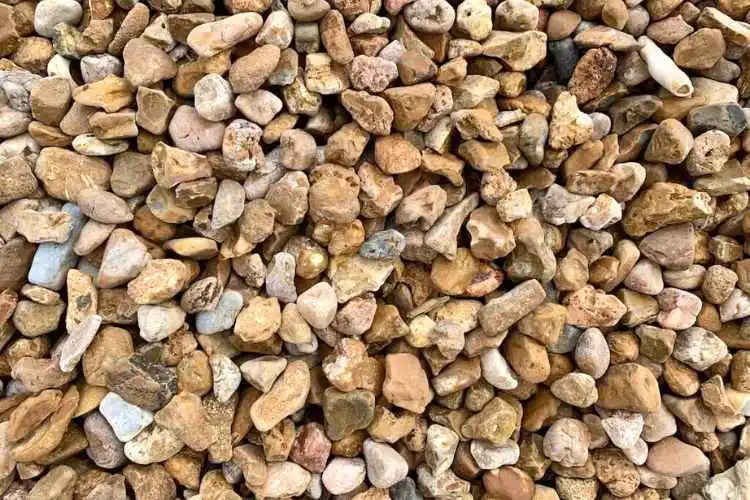
Crushed stone features uneven edges, but the surface of river rock is smooth and round. You can also use ‘egg rock’ a type of river rock named for its oval shape.
River rock is also an expensive option. The smooth edges of these stones don’t allow them to lock into one spot when crowded together. Therefore, difficult to create a storage area using these stones underneath a deck.
Pea gravel
These stones are more affordable than river rocks. However, these stones also have smooth edges, and won’t sit firmly when compacted together. If you want to place pea gravel underneath the deck, ensure the area is slope-free, which means flat.
Before you decide on what material you choose, you may have to consider a few aspects and then narrow down the suitable option.
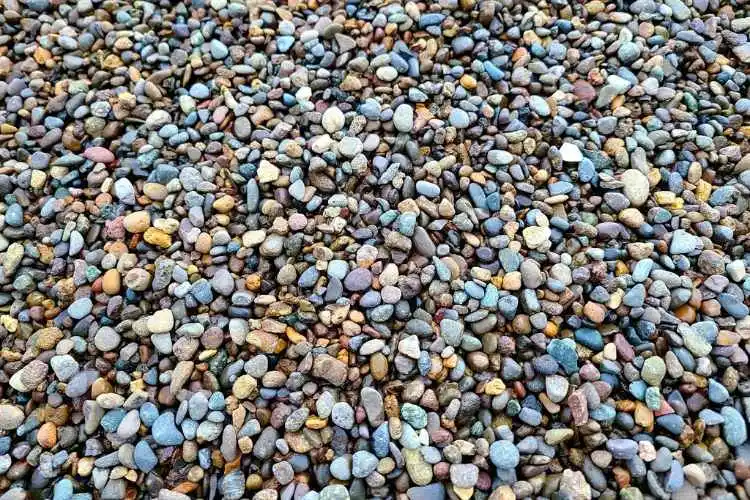
You must evaluate the specific issue you want to solve for your space underneath the deck. Whether it’s a drainage problem, weed problem, rodents taking up the space, etc. You must also check the height of your deck. It will help you to ideate better.
Moreover, before you initiate the work, you can get a fair idea of the cost it will require. There’s no denying that after you put up a gravel bed underneath the deck, it’s going to be an asset, enhancing the looks of your house, while resolving the issues mentioned above.
How To Cover Underneath The Deck: Step By Step Guide
You can install the gravel underneath the deck using several methods. Let’s understand those.
1. Before deck construction
Installation is easier if you put gravel underneath the deck before construction, or you can start it while the deck is being built.
In this case, leave spaces for the footers before you add gravel underneath the deck area. Once you install the deck frame and set up the footers, you can fill in these spots later before putting them on the deck boards.
2. After deck construction
In the case of the installation of gravel after deck construction, there’s a different approach. If the deck is shorter in height, you can install the gravel by shoveling the area underneath the deck. Alternatively, you can put the stones in a sled which would then be dragged beneath the deck by attaching them to a rope.
3. Putting gravel under the deck
Building a frame
First and foremost is to determine the slope underneath the deck. You can identify it using a laser level or a string level. Remove the topsoil, if any, till you hit the firm, steady soil.
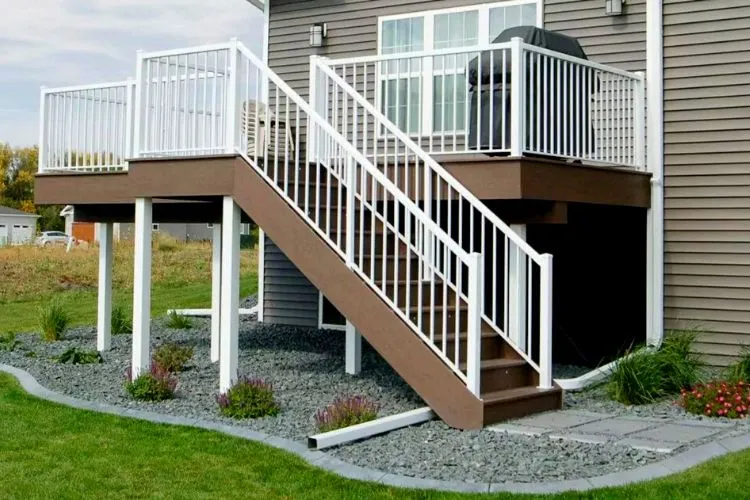
Begin from the area’s lowest point. Add pressure-treated timber surrounding the area’s border. Experts recommended using 4×6 timber. After you extend the first track of timber around the area, start with the second one. Repeat as many tracks till you level up the area under the deck.
Secure the timber corners with 4″ wood screws. Besides, if there are many tracks, add screws ‘skew-nailing’ each track. Drilling the timber and adding 24″ stakes of 1/2″ reinforcement bar at a distance of 6′ to 8′ around the perimeter ensures its longevity.
A leveled and strong perimeter helps install the gravel ideally, which can last for long periods.
Blocking the weeds
A strongly knitted fabric will suffice to secure the gravel area underneath the deck. It will bar the weeds and prevent them from cropping up. An ideally knitted wood barrier allows appropriate water drainage. Fasten the fabric edges onto the inside of the wooden frame.
Spread the gravel
Use crushed limestone gravel as it is the most suitable option. Ensure the layer of gravel is at least 4″, uniformly spread underneath the deck. You may need extra gravel to level the entire area.
Compacting the gravel
This step is optional but beneficial if followed. Compacting the gravel helps to set it firmly to give the utmost stability to the base. It may help you place any objects on it, such as storage, grill, or chairs.
What can I put under my deck to prevent rodents?
Rodents like to live in hidden places and may soon take over the underneath space if you don’t take immediate action. Let’s understand a few ways to keep rodents away.
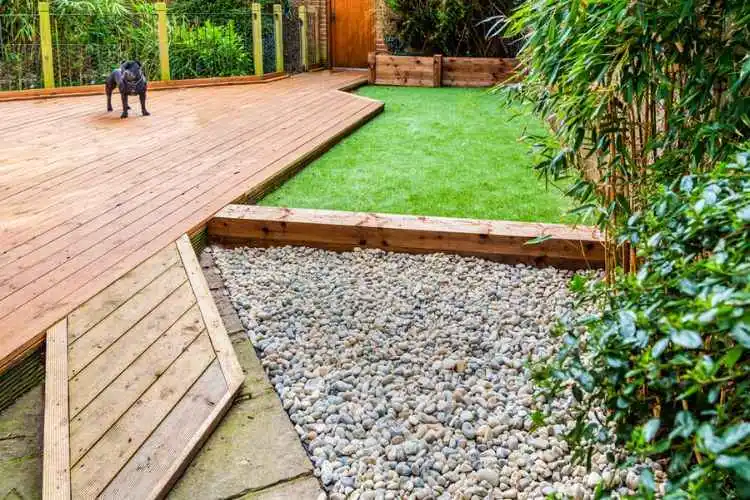
1. Build a barrier
Secure your area underneath the deck by installing mesh or chicken wire along the entire perimeter. Let it run across the boards to the ground. Hide the mesh or chicken wire by placing plantations around the deck. Installing a wooden trellis and having the mesh or chicken wire running behind it will also work.
2. Wood varnishing
Varnishing the wood will prevent wood-boring beetles, thus saving you from the eggs they drop in the wooden pores. If you notice any infestation, identifying the type of woodworm is crucial. Call for professional service to rid of the problem, in case you cannot identify what type of woodworm.
3. Humane traps
Using non-fatal traps or sprinkling scent repellants around the deck will keep the rodents away. Rodents hate garlic, peppermint, and hot spices smell. Planting a peppermint tree is a good idea. However, it may take time to grow, till then you can buy rodent repellants from local shops and drop them around the perimeter of the space underneath the deck.
Protip: Ensure you don’t drop or leave any eatables underneath the deck area. That’s a straightforward invitation to the rodents.
Does the underside of a deck need to breathe?
Yes, the underside of a deck needs to breathe. It’s a natural phenomenon of wood to expand and contract for different reasons. During hot weather the wood contracts, while on humid or rainy days it expands. Therefore, proper ventilation must be planned for the underside of the deck.
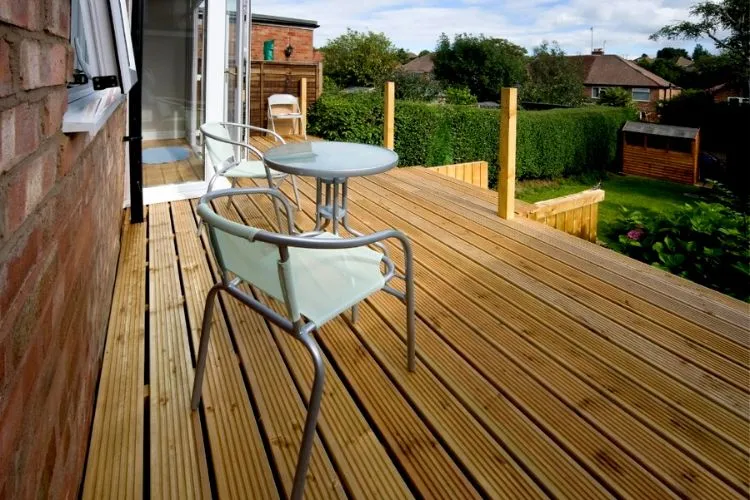
Air needs to flow freely through the deck and under the beams. It ensures appropriate evaporation of moisture continuously. An incorrect installation may hamper the ventilation causing the deck to tumble or distort.
You May Also Read: How Long Will A Wooden Deck Last? | How To Get Rid Of Wasps Under The Deck | Can You Put Deck Tiles On Grass?
Conclusion:
Before constructing a deck, it’s essential to plan what will go underneath the deck. There are several methods to fill in the gap, which benefits you from weed growth, drainage, and erosion while beautifying the underneath area of the deck.
The ideal material is gravel comprising crushed limestone, which is affordable with an appealing appearance. Other options are costly, and may not resolve all problems, other than beautification.


